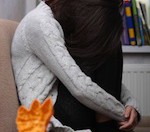Healthy perineums are vital to women’s health. Read about tips for healthy perineums after childbirth.
The perineum is a group of muscles between the vagina and the anus/rectum. It is covered with skin. There are superficial and deep perineal muscles and these form part of the pelvic floor. The perineum is shaped like an upside down pyramid.
The pelvic floor is a hammock shaped group of muscles, which have several functions:
- Support of abdominal and pelvic organs, which are substantial!
- Sexual intercourse – the muscles become engorged with blood during sexual arousal, enabling orgasm
- Childbirth – the muscles stretch to allow the baby to pass through and then return to normal again
- Continence of urine and faeces are controlled by urethral and anal sphincters, which form part of the pelvic floor.
After childbirth
Many women sustain tears to their perineum, or have episiotomies, during childbirth. However, contrary to public opinion, even women that have planned Caesarean section, or do not have any perineal damage, can experience weakened pelvic floors after childbirth!
We all need to do pelvic floor exercises in order to maintain their strength and functions for the rest of our lives. These exercises will also speed up the healing process, as they bring improved blood flow to the wound.
How do I do pelvic floor exercises?
The simplest way of teaching pelvic floor exercises was explained by a continence nurse a few years ago:
- Sit on a chair with your feet flat on the floor
- Lean forward until your elbows are resting on your knees
- Tighten your anal muscles, or back passage, as though you were preventing yourself from passing wind. These are the easiest muscles ‘to find’.
- Pull those muscles up towards your belly button until you feel your vagina tighten too and you will then feel a pull in your lower abdominal muscles too (all good!)
- Aim to hold to 10 then SLOWLY relax the muscles
- Repeat 10 times
- Repeat 10 times a day!!!
If you were trying to build up arm and leg muscles you would honestly know that you had to keep repeating those exercises. Your pelvic floor is no different!
If at first you cannot hold for the count of 10, just hold for a few seconds then slowly let go.
You will soon feel a difference:
- During sexual intercourse, which will be more enjoyable
- When jumping up and down, or sneezing, you are much less likely to leak urine
- Your lower abdomen will feel flatter and firmer! Honest!
Healing that wound
If you do have a tear or episiotomy there are additional tips to speed the healing process –
Eating and drinking well
- Eat lots of fruit and vegetables, especially those high in vitamin C such as kiwi fruit and citrus fruits
- Drink lots of water
- Be sure to take sufficient protein form meat, cheese, pulses and nuts
- Ensure a good diet full of complex carbohydrates for lasting energy, such as brown bread and rice, cereals and some occasional home baking!
Rest well after childbirth. Do not be rushing off to the supermarket at the first opportunity – the wound needs time to heal.
If you experience any form of incontinence or urgency to get to the toilet after childbirth – see your GP or a physiotherapist. This is not something that women ‘just have to suffer’! A few exercises early on will make all the difference later in life.
How do I keep the wound clean?
Every time you pass urine in those first few days, wash your perineum.
Easiest done in the shower, but you can’t be having a shower every couple of hours.
Alternatively, sit back on the toilet and use a pump bottle to squirt warm tap water onto your vulva and perineum. Do this before and after having a wee – it will sting a lot less.
Gently pat dry with an old, clean towel.
Change your maternity pad every time you go to the toilet, to lessen the chance of poor hygiene and infection.
Can I prevent a tear?
There has been much debate over whether women can prevent tears in childbirth with perineal massage. Gently massaging a vegetable based oil into the perineum in pregnancy, to help keep the skin supple and stretchy for childbirth, will certainly do no harm. However, many other factors such as the size of the baby and the position of his head and your type of birth will also affect the likelihood of tearing.
A final tip
Squeeze your pelvic floor muscles every time you turn on a tap for the rest of your life!
Useful articles
To read more about Episiotomies and Tears, click here





